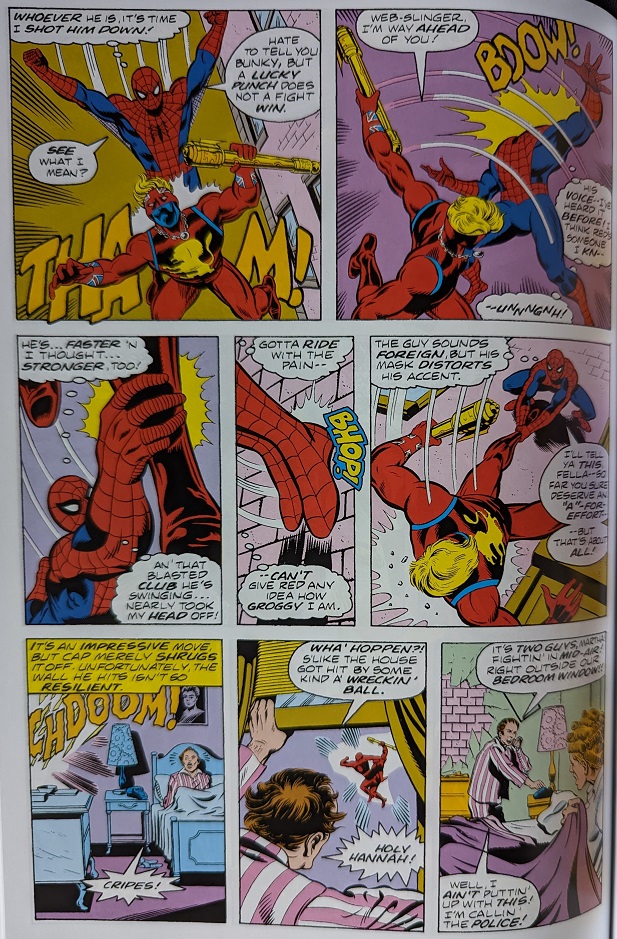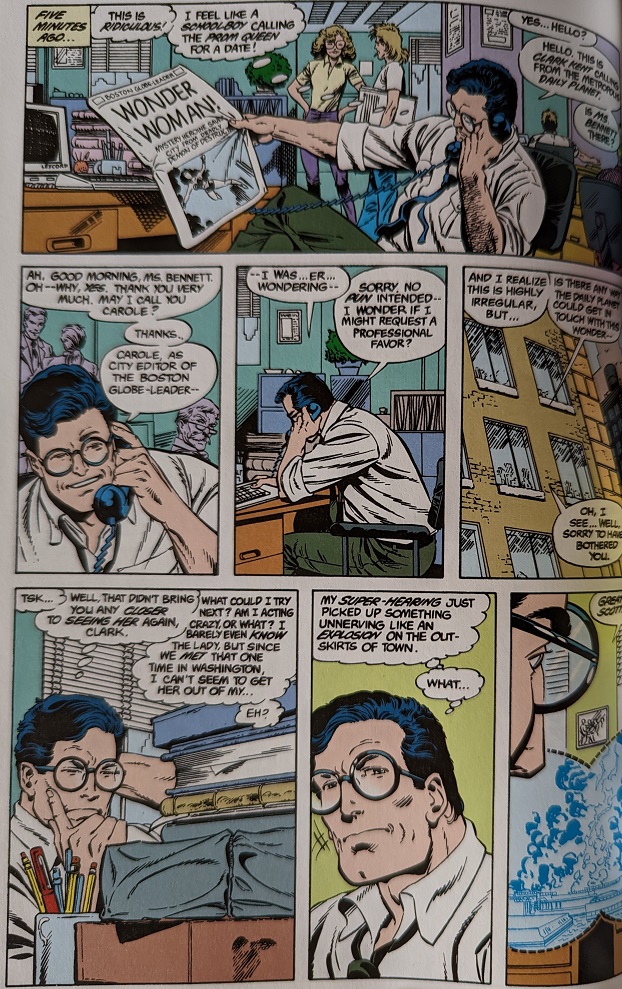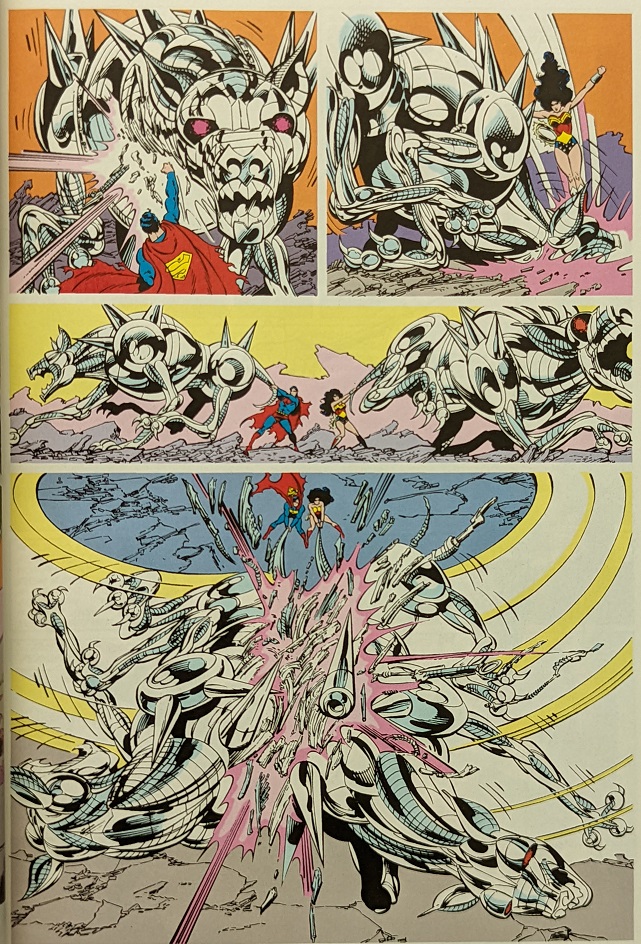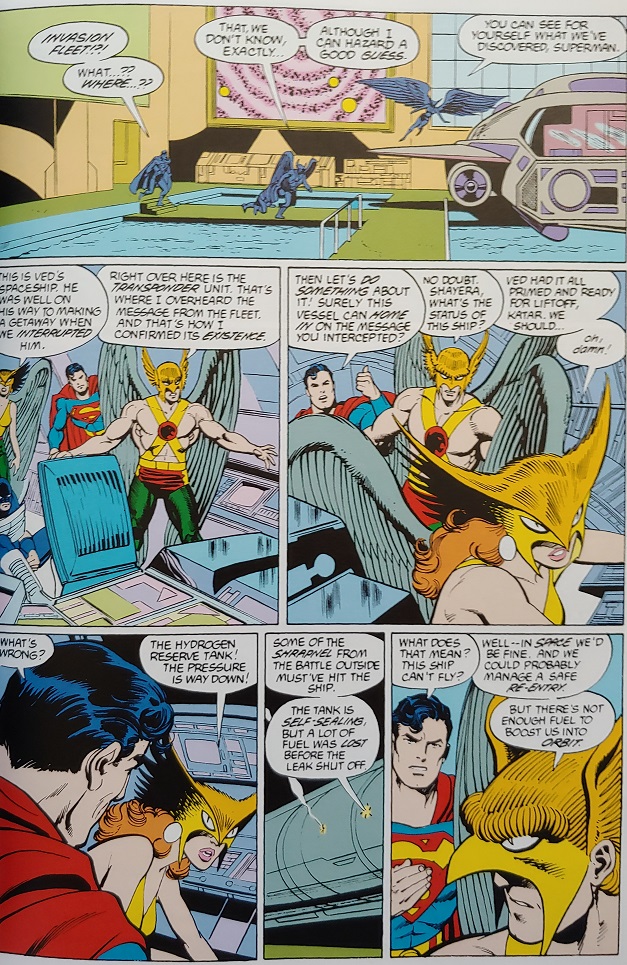The most typical excuse of college students for being absent is “I overslept”; and that is how the story begins. Peter Parker has to meet the dean on campus early in the morning and, of course, he obviously overslept. This is such a youthful and recurring situation that makes the story feel more real. I remember when I moved to Wisconsin, in the university housing building where I was living, next to the main entrance there were two international students like me except they were not from South America. They were both speaking with a perfect British accent so I automatically assumed they were both from the UK.
Actually only one of them was from London and the other one was a German whose mother was British. That German ended up being one of my best friends in my first semester living in the US; and the other guy who was British, well, he was basically Brian Braddock. Blonde hair, blue eyes, athletic and with that absolutely delicious British accent. There was no way I could forget this guy, in this college environment. Many years later I actually read Captain Britain and I realized, ah blimey, this guy exists in real life! I met him and I'm sure if he ever decided to rub his secret amulet he would have turned into Britain's greatest hero.
I never thought Chris Claremont would be such an amazing writer for Spider-Man. In “Introducing, Captain Britain” (originally published in Marvel Team-Up # 65, January 1978) Peter Parker is a college student at Empire State University and when he gets called by the dean he gets very stressed; that's why he can’t sleep the previous night, he's thinking that he has been called into the office to talk about his bad grades, missing classes, poor attendance, etc., and that he might lose his scholarship. There are many situations that could go wrong but the last thing that Parker expects is that the dean will ask him for a favor, sort of, by welcoming Brian Braddock, the new student from the UK who is now at Empire State University. Because Peter Parker signed a form which he didn't remember, now he has to offer accommodations to the new student. Fortunately the university will pay him $50 a week which, I guess, in 1977 was quite a fortune. It's such a funny moment when the dean greets Peter Parker, who isn’t acting like the friendly neighborhood that we all know, but as soon as the money gets into the equation, then Peter agrees to have a temporary roommate.
 |
| John Byrne & Frank Giacoia |
I honestly don’t know if this is based in reality, but obviously a lot of things have changed since the 70s. It seems to me that in the story the university is really concerned about the well-being of their international students; however, today, at least judging by the standards of the University of California they couldn't really give a damn about the international students who are often asked to be in the US one or two weeks before the beginning of their lease, some of the apartments are managed by the university and yet a lot of international students have to make a special arrangements or staying in a hotel for those two weeks because won’t be allowed to move in earlier. It's just a very cruel system and very unfair. Apparently things were way much better in the 70s.
 |
| Brian Braddock & Peter Parker |
Following the classic Marvel tradition of superheroes fighting each other because of a simple misunderstanding, the first encounter between Spider-Man and Captain Britain is of course a very spectacular fight in which they both prove to be formidable heroes with unique abilities. It's only by being clever and more experienced that Spider-Man is able to defeat Captain Britain after a difficult fight. Of course after they realize there is no reason to fight, they soon become friends. Only Spider-Man realizes that Captain Britain is in reality Brian Braddock. They are now roommates and have their secret identities, they are young superheroes and now friends, what a marvelous combination! I would have loved to see more issues exploring more of this friendship / roommate relationship between Peter Parker and Brian Braddock, between Spider-Man and Captain Britain. Unfortunately we only have these two issues, but once again what a delightful premise they have!
 |
| Roommates |
In “Murder World” (Marvel Team-Up # 66, February 1978), Arcade captures Spider-Man and Captain Britain, and makes them suffer in his Murder World. This marks the first appearance of Arcade, who will later reappear in the pages of X-Men, also by Claremont and Byrne. Here we get to see how Courtney (Brian Braddock’s love interest) is held hostage, for the young man finding out about this kidnapping is shocking: “Memories, intrusive, breaking his concentration, yet welcome just the same, of walks with Courtney, talks with her, moments stolen between classes at Thames University, as a casual acquaintanceship blossomed into friendship and then into much, much more, something too precious to lose”. Working together and using their extraordinary abilities, the two superheroes are able to rescue Courtney and escape from Murder World in the nick of time.
________________________________________________________________________________________________________
________________________________________________________________________________________________________
La excusa más típica de los universitarios al faltar a clases es “me quedé dormido”; y así es como comienza la historia. Peter Parker tiene que reunirse con el decano en el campus, temprano en la mañana y, por supuesto, obviamente se quedó dormido. Esta es una situación tan juvenil y recurrente que hace que la historia parezca más real. Recuerdo cuando me mudé a Wisconsin, en el edificio de viviendas de la universidad donde vivía, junto a la entrada principal, había dos estudiantes internacionales como yo, excepto que no eran de América del Sur. Ambos hablaban con un perfecto acento británico, así que automáticamente asumí que ambos eran del Reino Unido.
En realidad sólo uno de ellos era de Londres y el otro era un alemán de madre británica. Ese alemán terminó siendo uno de mis mejores amigos en mi primer semestre viviendo en Estados Unidos; y el otro tipo, el británico, bueno, básicamente era Brian Braddock. Pelo rubio, ojos azules, atlético y con ese acento británico absolutamente delicioso. No había manera de que pudiera olvidar a este chico, en este ambiente universitario. Muchos años después, leí Captain Britain y me di cuenta que, ¡vaya, este tipo existe en la vida real! Lo conocí y estoy seguro de que si alguna vez él decidiera frotar su amuleto secreto, se habría convertido en el héroe más grande de Gran Bretaña.
 |
| Spider-Man versus Captain Britain |
Nunca pensé que Chris Claremont sería un escritor tan increíble para Spider-Man. En “Presentamos al Capitán Gran Bretaña” (publicado originalmente en Marvel Team-Up # 65, enero de 1978) Peter Parker es un estudiante universitario en la Empire State University, y cuando el decano lo llama, se estresa mucho; por eso no puede dormir la noche anterior, está pensando que lo han llamado a la oficina para hablar sobre sus malas notas, ausentismo, clases perdidas, etc., y que podría perder su beca. Hay muchas situaciones que podrían salir mal, pero lo último que Parker espera es que el decano le pida un favor, darle la bienvenida a Brian Braddock, el nuevo estudiante del Reino Unido que ahora está en la Universidad Empire State. Debido a que Peter Parker firmó un formulario que no recordaba, ahora tiene que ofrecer alojamiento al nuevo estudiante. Afortunadamente la universidad le pagará $50 a la semana que, supongo, en 1977 era una gran fortuna. Es un momento muy divertido cuando el decano saluda a Peter Parker, que no actúa como el vecino amigable que todos conocemos, pero tan pronto como el dinero entra en la ecuación, Peter acepta tener un compañero de cuarto temporal.
Sinceramente, no sé si esto se basa en la realidad, pero obviamente muchas cosas han cambiado desde los 70s. Me parece que en esta historia la universidad está realmente preocupada por el bienestar de sus estudiantes internacionales; sin embargo, hoy en día, al menos a juzgar por los estándares de la Universidad de California, a aquella realmente no le importa un comino los estudiantes internacionales a quienes a menudo se les pide que estén en los Estados Unidos una o dos semanas antes del comienzo de su contrato de arrendamiento, algunos de los apartamentos son administrados por la universidad y, sin embargo, muchos estudiantes internacionales tienen que hacer arreglos especiales o quedarse en un hotel durante esas dos semanas porque no se les permite mudarse antes. Es un sistema muy cruel y muy injusto. Al parecer, las cosas eran mucho mejores en los 70s.
 |
| Arcade |
Siguiendo la tradición clásica de Marvel, los superhéroes pelean entre sí por un simple malentendido, el primer encuentro entre Spider-Man y Captain Britain es, por supuesto, una pelea muy espectacular en la que ambos demuestran ser héroes formidables con habilidades únicas. Sólo siendo inteligente y más experimentado, Spider-Man puede derrotar a Captain Britain después de una pelea difícil. Por supuesto, después de darse cuenta de que no hay razón para pelear, pronto se hacen amigos. Solo Spider-Man se da cuenta de que Captain Britain es en realidad Brian Braddock. Ahora son compañeros de cuarto y tienen sus identidades secretas, son jóvenes superhéroes y ahora amigos, ¡qué maravillosa combinación! Me hubiera encantado ver más números que explorasen más esta relación de amistad / compañeros de habitación entre Peter Parker y Brian Braddock, entre Spider-Man y Captain Britain. Desafortunadamente, solo tenemos estos dos números, pero una vez más, ¡qué deliciosa premisa tienen!
 |
| Spider-Man & Captain Britain versus Arcade |
En “Murder World” (Marvel Team-Up # 66, febrero de 1978), Arcade captura a Spider-Man y a Captain Britain y los hace sufrir en su Mundo Asesino. Esta es la primera aparición de Arcade, quien luego reaparecerá en las páginas de X-Men, también de la mano de Claremont y Byrne. Aquí podemos ver cómo Courtney (el interés amoroso de Brian Braddock) es una rehén, para el joven enterarse de este secuestro es impactante: “Recuerdos, intrusivos, que rompen su concentración, pero bienvenidos de todos modos, de paseos con Courtney, conversaciones con ella, momentos robados entre clases en la Universidad del Támesis, cuando una relación casual floreció en amistad y luego en mucho, mucho más, algo demasiado precioso para perder”. Trabajando juntos y usando sus extraordinarias habilidades, los dos superhéroes logran rescatar a Courtney y escapar de Murder World en el último momento.






































